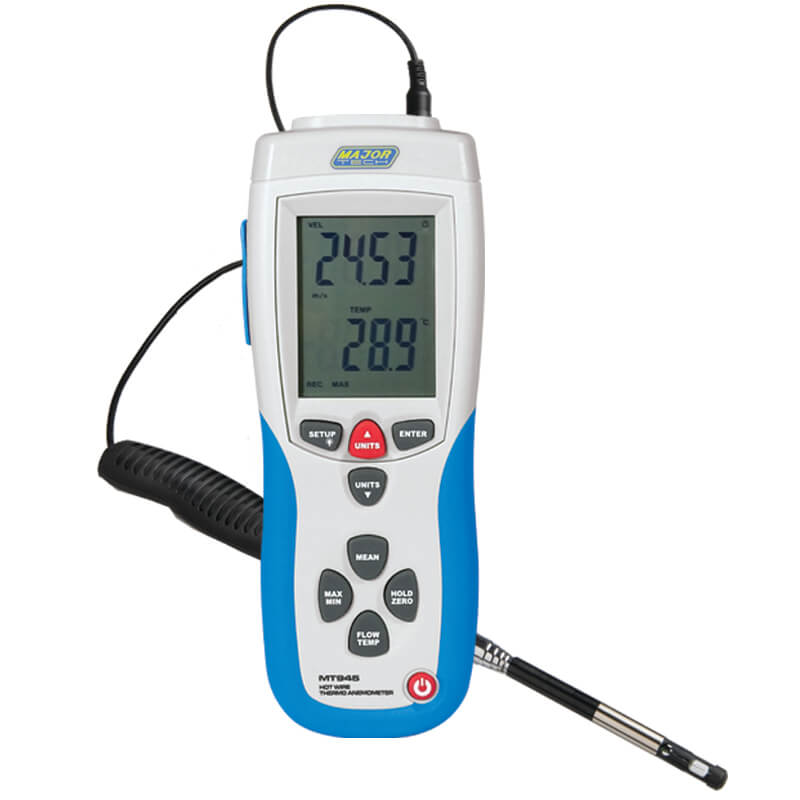Choosing the Right Anemometer: A Comprehensive Purchasing Guide
Choosing the Right Anemometer: A Comprehensive Purchasing Guide
Blog Article
Anemometers Introduced: Understanding Their Importance in Environmental Monitoring and Precaution
The duty of anemometers in ecological surveillance and safety measures is usually undervalued, yet their relevance is indisputable. From weather forecasting to air travel security, anemometers play a critical duty in offering precise information that educates decision-making processes and improves total security.
Background of Anemometers
The advancement of anemometers can be traced back to the ancient worlds where basic wind determining tools were initial utilized. One of the earliest known anemometers was the hemispherical cup anemometer designed by Leon Battista Alberti in the 15th century.
Over the years, improvements in modern technology led to the development of more modern-day anemometers, including ultrasonic anemometers and laser Doppler anemometers, providing enhanced accuracy and effectiveness in measuring wind rate and direction. The background of anemometers showcases an impressive journey of technology and progression in the field of weather forecasting.
Kinds Of Anemometers
Throughout the area of weather forecasting, different kinds of anemometers have been established to accurately measure wind rate and instructions. One of the most typical type is the cup anemometer, which includes three or 4 mugs installed on straight arms that turn with the wind. As the mugs spin, the rate at which they revolve is straight proportional to the wind rate. Another commonly used kind is the vane anemometer, which includes a tail or fin that aligns itself with the wind instructions. This placement permits the gadget to figure out the wind direction. Sonic anemometers make use of ultrasonic signals to determine wind speed and instructions precisely. They are commonly made use of in study applications because of their high accuracy. Hot-wire anemometers run based on the concept that the cooling impact of wind on a warmed cable is symmetrical to the wind rate. These anemometers are suitable for gauging reduced wind speeds with high precision. Each type of anemometer has its toughness and is selected based upon the certain requirements of the surveillance task available.
Applications in Meteorology
Having actually discussed the different types of anemometers utilized in weather forecasting for measuring wind speed and direction, it is essential to discover their practical applications in the area. Anemometers play an essential duty in meteorology by offering real-time and exact information on wind conditions (anemometer). Meteorologists utilize anemometers to check wind rate and instructions to anticipate weather condition patterns, problem warnings for serious weather occasions like tornadoes, tornados, and hurricanes, and examine climatic conditions for air travel safety and security
In meteorology, anemometers assist in comprehending regional and neighborhood wind patterns, which are essential for forecasting weather condition changes and identifying climatic fads. These tools are likewise used in research study to examine microclimates, metropolitan warmth islands, and air contamination diffusion. Furthermore, anemometers are utilized in agriculture to maximize crop management techniques, such as watering and pesticide application, based upon wind conditions.
Relevance in Aeronautics Security
An essential aspect of making certain air travel safety hinges on the careful monitoring of wind problems using anemometers. Anemometers play an important role in aeronautics by why not check here offering real-time information on wind rate and direction, helping pilots in making informed decisions during liftoff, flight, and touchdown. Unpredictable and solid winds can considerably impact airplane procedures, making it vital for aviation authorities to count on accurate wind measurements to ensure the security of guests and team.

In the vibrant atmosphere of aviation, where also small modifications in wind speed and direction can have profound effects, anemometers stand as important tools for promoting safe and secure and safe air travel.
Role in Environmental Study
Just how do anemometers add to improvements in environmental study? Anemometers play a critical role in ecological research by giving crucial information on wind speed and instructions. This details is vital for recognizing different climatic processes, such as air pollution diffusion, weather patterns, and climate change. By properly measuring wind attributes, anemometers aid researchers examine the movement of contaminants in the air, examine the impact of commercial exhausts, and forecast the spread of impurities in the setting.


Final Thought
To conclude, anemometers have actually played a critical role in environmental monitoring and precaution. With a rich history and various types readily available, these devices have been commonly made use of in meteorology, aviation safety, and ecological research. Understanding the relevance of anemometers is essential for accurately determining wind speed and direction, which is vital for anticipating weather condition patterns, ensuring safe aviation procedures, and carrying out ecological researches - anemometer. Their payments blog to these areas can not be taken too lightly.
One of the earliest recognized anemometers was the hemispherical mug anemometer created by Leon Battista Alberti in the 15th century. Over the years, advancements in modern technology led to the development of even more modern anemometers, consisting of ultrasonic anemometers and laser Doppler anemometers, offering raised precision and performance in determining wind rate and direction. Hot-wire anemometers run based on the concept that the cooling result of wind on a warmed cable is symmetrical to the wind speed. Meteorologists use anemometers to monitor wind rate and instructions to forecast weather condition patterns, concern cautions for extreme weather condition occasions like cyclones, tornados, and hurricanes, and analyze atmospheric conditions for aeronautics safety and security.
Comprehending the relevance of anemometers is important for properly gauging wind speed and direction, which is crucial for forecasting weather patterns, making sure secure aviation operations, and carrying out ecological researches. (anemometer)
Report this page